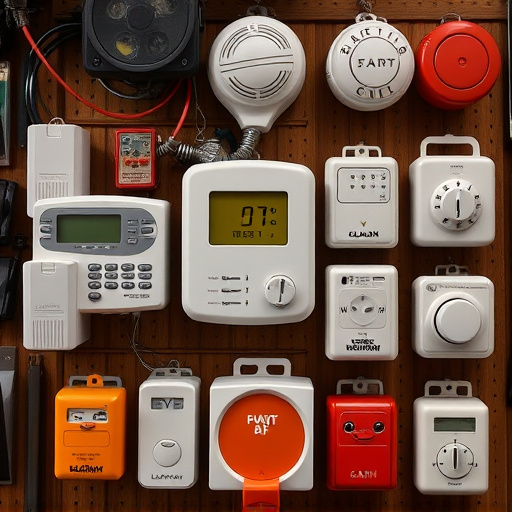Personal attack alarms, vital tools for individual safety, emit loud (120+ decibels) audible alerts that deter assailants and notify bystanders, providing critical seconds for escape or help. Choosing one should focus on sound range—a wider area of coverage ensures your warning is heard, enhancing deterrence. Key features include ease of use, durability, long-lasting battery life, and high decibel levels (120-150 dB) for maximum effectiveness in emergency situations.
Personal protection devices equipped with audible alarms have become indispensable tools for safety and self-defense. In today’s world, understanding the importance of these devices is crucial for every individual seeking peace of mind. This article delves into the significance of personal attack alarms, exploring their functionality, effectiveness, and key features. We’ll specifically focus on the critical aspect of sound range, ensuring you’re protected even in bustling environments, providing maximum visibility and deterrence.
- Understanding Personal Protection Devices: Why They're Essential
- The Power of Audible Alarms: How They Work and Their Effectiveness
- Key Features to Consider When Choosing a Personal Attack Alarm
- Exploring Sound Range: Ensuring Maximum Protection and Visibility
Understanding Personal Protection Devices: Why They're Essential
Personal protection devices equipped with audible alarms have become indispensable tools for ensuring individual safety, especially in uncertain or potentially dangerous situations. These devices serve as a powerful deterrent and a means of self-defense, providing users with a sense of security and empowerment. The primary function of a personal attack alarm is to emit a loud and attention-grabbing sound that can startle an assailant and alert nearby individuals, thus deterring potential harm.
The effectiveness of these devices lies in their sound range and loudness. A well-designed personal attack alarm should be capable of projecting its audio signal over a significant distance, ensuring that the alarm is heard not only by the user but also by people in the vicinity. This feature allows for swift intervention and response during emergencies, making it an essential accessory for individuals who frequent high-risk areas or those with heightened security concerns.
The Power of Audible Alarms: How They Work and Their Effectiveness
Audible alarms in personal protection devices serve as a powerful deterrent and crucial component for self-defence. When activated, these devices emit a loud and distinct sound that can reach impressive ranges, often up to 120 decibels or more. This high-intensity noise serves multiple purposes. Firstly, it startles the assailant, creating a split second of hesitation, which could be enough time for the individual in distress to escape or fight back. Secondly, the alarm draws attention, alerting nearby bystanders and potentially scaring off the attacker.
The effectiveness of audible alarms lies in their ability to trigger a rapid response. The loud sound overcomes background noise, ensuring it is heard above all else. This immediate reaction time can be a game-changer during a personal attack, providing vital seconds for help to arrive or for the victim to fend off their assailant. Moreover, the range of these alarms allows users to signal for assistance even if they are unable to communicate verbally due to shock or fear.
Key Features to Consider When Choosing a Personal Attack Alarm
When selecting a personal attack alarm, several key features should guide your decision. One of the most critical aspects is the sound range of the alarm. A wider sound range ensures that your warning is heard over a larger area, enhancing its effectiveness in deterring potential attackers. Look for devices that can emit loud, high-decibel sounds typically ranging from 120 to 150 decibels to startle and scare off assailants.
Other important considerations include ease of use, durability, and battery life. A user-friendly design with simple activation mechanisms is essential, especially in stressful situations. The alarm should be robust and waterproof to withstand various environments. Additionally, a long-lasting battery is crucial; consider models that offer replaceable batteries or rechargeable options for continuous protection without frequent replacements.
Exploring Sound Range: Ensuring Maximum Protection and Visibility
Exploring Sound Range is a key aspect when considering Personal Attack Alarms. These devices are designed to deter potential attackers and alert others for help, and their effectiveness largely relies on the audibility of the alarm sound. The range at which an alarm can be heard clearly varies based on several factors, including ambient noise levels, weather conditions, terrain, and the specific characteristics of the alarm itself. Personal attack alarms with a wider sound range ensure maximum protection by making it possible to be heard even in noisy environments or challenging terrains.
Choosing an alarm with an optimal sound range can significantly enhance visibility and response time during emergencies. It allows users to activate the alarm from a safe distance, giving them a chance to escape or attract attention. Additionally, certain personal attack alarms use high-decibel sounds that are known to startle attackers, providing a crucial split second for individuals to react and seek safety. Ensuring the device can project its sound effectively within a suitable range is therefore vital for personal safety.
Personal protection devices with audible alarms are game-changers in enhancing individual safety. By understanding their power and effectiveness, especially through key features and sound range considerations, you can make an informed choice. In today’s digital era, these devices offer a simple yet robust solution for navigating unfamiliar environments or potential threats, ensuring maximum protection and visibility. Remember that the right personal attack alarm can be a testament to your safety and peace of mind.
